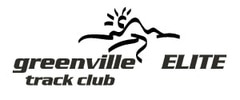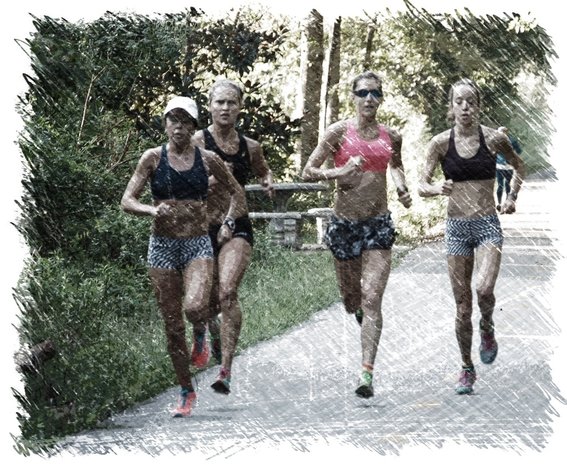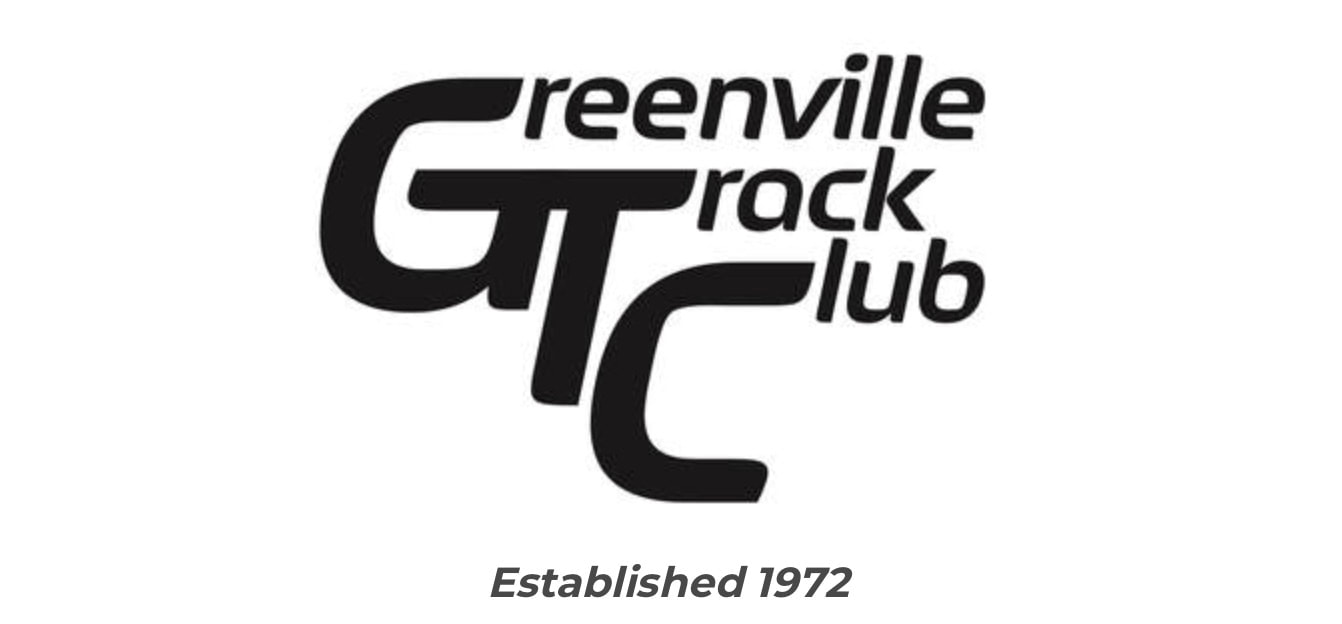Frequently Asked Questions (FAQs)
Q: Who should apply?
A: Emerging elite runners who believe they can rise to the national level if provided guidance, support and training partners. While the performance standards are listed on this webpage, athletes who believe they fit with this program are encouraged to submit an online application.
Q: What if I'm still in college but will graduate soon?
A: This program was created to provide graduating collegians with an opportunity to continue their running careers. Graduating athletes are encouraged to apply for the program.
Q: After my application is submitted, what is the process?
A: Once a potential candidate's application is received, we schedule a phone call to initiate the conversation. If both parties are in agreement, then the candidate schedules a visit to Greenville for an interview, meet the coaches and team and get a better feel for the program and environment.
Q: What does "no or few injuries" mean?
A: Most runners have injuries but these injuries should be minor and treatable, not chronic. Consistent training over time is a key to success in middle and long distance running. Athletes unable to maintain consistent training without injury may become frustrated in a team environment.
Q: Where do the runners live?
A: Greenville Track Club-ELITE currently occupies several houses in Greenville, SC. Additional houses will be rented as the team grows.
Q: Do your athlete's work in addition to their athletic training?
A: Yes, all of our athletes have part-time employment in order to meet their respective financial responsibilities. We prefer and encourage each of them to seek employment opportunities in their field of interest or college major of emphasis. This allows the athlete to build their work resume so they are ready for their work career when they depart our program.
Q: Where do your athletes work?
A: Depending on their passion and career interests, we encourage them to seek opportunities that will prepare them for their post-athletic careers. Our past and current athletes are or have been employed by these companies: Greenville Health System, ScanSource, Inc., YMCA (personal training), Fleet Feet Sports, Run In Greenville, Joy Real Estate, Performance Therapy . . .
Q: What is the average mileage for your runners?
A: It varies from individual to individual depending upon their background, current level of fitness, and racing goals and objectives. While we definitely aren’t high mileage, we are not low mileage advocates either. Most of our athletes average between 60 and 90 miles per week. That is with only two or maybe three days of double workouts—which are on our “hard” days. If we were to double five or six days a week their mileage would be 10-20 miles more per week, but we believe that the recovery days are much more important in our training process. Our belief has been to maximize the output with optimal training versus just running a lot of miles. Why run more than you need to?
This concept of stress/recover/adapt and repeat was learned back in grad school when we studied Hans Selye’s General Adaptation Syndrome. Basically, the hypothesis states that an organism becomes stronger when it is stressed and has adequate recovery before additional stress is applied. We have proved this true over years of training and racing.
Q: What is the average speed of your athletes’ training?
A: Well, that might be somewhat controversial since we don’t actually measure mileage except for interval or tempo sessions. We use the “Badger Miles” system made somewhat famous by former Wisconsin coach Jerry Schumacher (currently the director of the University of Oregon T&F program and coach of Nike Bowerman Track Club). That is we run for a specific amount of time and then divide by 7:00 per mile. We did this even before Jerry was coaching at Wisconsin, but we like the label he came up with.
Some of our athletes have arrived being a little hung up on measuring their exact mileage run, but after a while they understand that running for time works just fine (with the obvious exception of specific interval or tempo sessions). The body doesn’t really have a pedometer, but at the cellular level time spent utilizing a specific energy system is important.
However, in today's GPS environment, our athlete's do have access to tracking their actual pace and we do use such measurements during our steady-state, tempo or progressive runs.
A: Emerging elite runners who believe they can rise to the national level if provided guidance, support and training partners. While the performance standards are listed on this webpage, athletes who believe they fit with this program are encouraged to submit an online application.
Q: What if I'm still in college but will graduate soon?
A: This program was created to provide graduating collegians with an opportunity to continue their running careers. Graduating athletes are encouraged to apply for the program.
Q: After my application is submitted, what is the process?
A: Once a potential candidate's application is received, we schedule a phone call to initiate the conversation. If both parties are in agreement, then the candidate schedules a visit to Greenville for an interview, meet the coaches and team and get a better feel for the program and environment.
Q: What does "no or few injuries" mean?
A: Most runners have injuries but these injuries should be minor and treatable, not chronic. Consistent training over time is a key to success in middle and long distance running. Athletes unable to maintain consistent training without injury may become frustrated in a team environment.
Q: Where do the runners live?
A: Greenville Track Club-ELITE currently occupies several houses in Greenville, SC. Additional houses will be rented as the team grows.
Q: Do your athlete's work in addition to their athletic training?
A: Yes, all of our athletes have part-time employment in order to meet their respective financial responsibilities. We prefer and encourage each of them to seek employment opportunities in their field of interest or college major of emphasis. This allows the athlete to build their work resume so they are ready for their work career when they depart our program.
Q: Where do your athletes work?
A: Depending on their passion and career interests, we encourage them to seek opportunities that will prepare them for their post-athletic careers. Our past and current athletes are or have been employed by these companies: Greenville Health System, ScanSource, Inc., YMCA (personal training), Fleet Feet Sports, Run In Greenville, Joy Real Estate, Performance Therapy . . .
Q: What is the average mileage for your runners?
A: It varies from individual to individual depending upon their background, current level of fitness, and racing goals and objectives. While we definitely aren’t high mileage, we are not low mileage advocates either. Most of our athletes average between 60 and 90 miles per week. That is with only two or maybe three days of double workouts—which are on our “hard” days. If we were to double five or six days a week their mileage would be 10-20 miles more per week, but we believe that the recovery days are much more important in our training process. Our belief has been to maximize the output with optimal training versus just running a lot of miles. Why run more than you need to?
This concept of stress/recover/adapt and repeat was learned back in grad school when we studied Hans Selye’s General Adaptation Syndrome. Basically, the hypothesis states that an organism becomes stronger when it is stressed and has adequate recovery before additional stress is applied. We have proved this true over years of training and racing.
Q: What is the average speed of your athletes’ training?
A: Well, that might be somewhat controversial since we don’t actually measure mileage except for interval or tempo sessions. We use the “Badger Miles” system made somewhat famous by former Wisconsin coach Jerry Schumacher (currently the director of the University of Oregon T&F program and coach of Nike Bowerman Track Club). That is we run for a specific amount of time and then divide by 7:00 per mile. We did this even before Jerry was coaching at Wisconsin, but we like the label he came up with.
Some of our athletes have arrived being a little hung up on measuring their exact mileage run, but after a while they understand that running for time works just fine (with the obvious exception of specific interval or tempo sessions). The body doesn’t really have a pedometer, but at the cellular level time spent utilizing a specific energy system is important.
However, in today's GPS environment, our athlete's do have access to tracking their actual pace and we do use such measurements during our steady-state, tempo or progressive runs.













